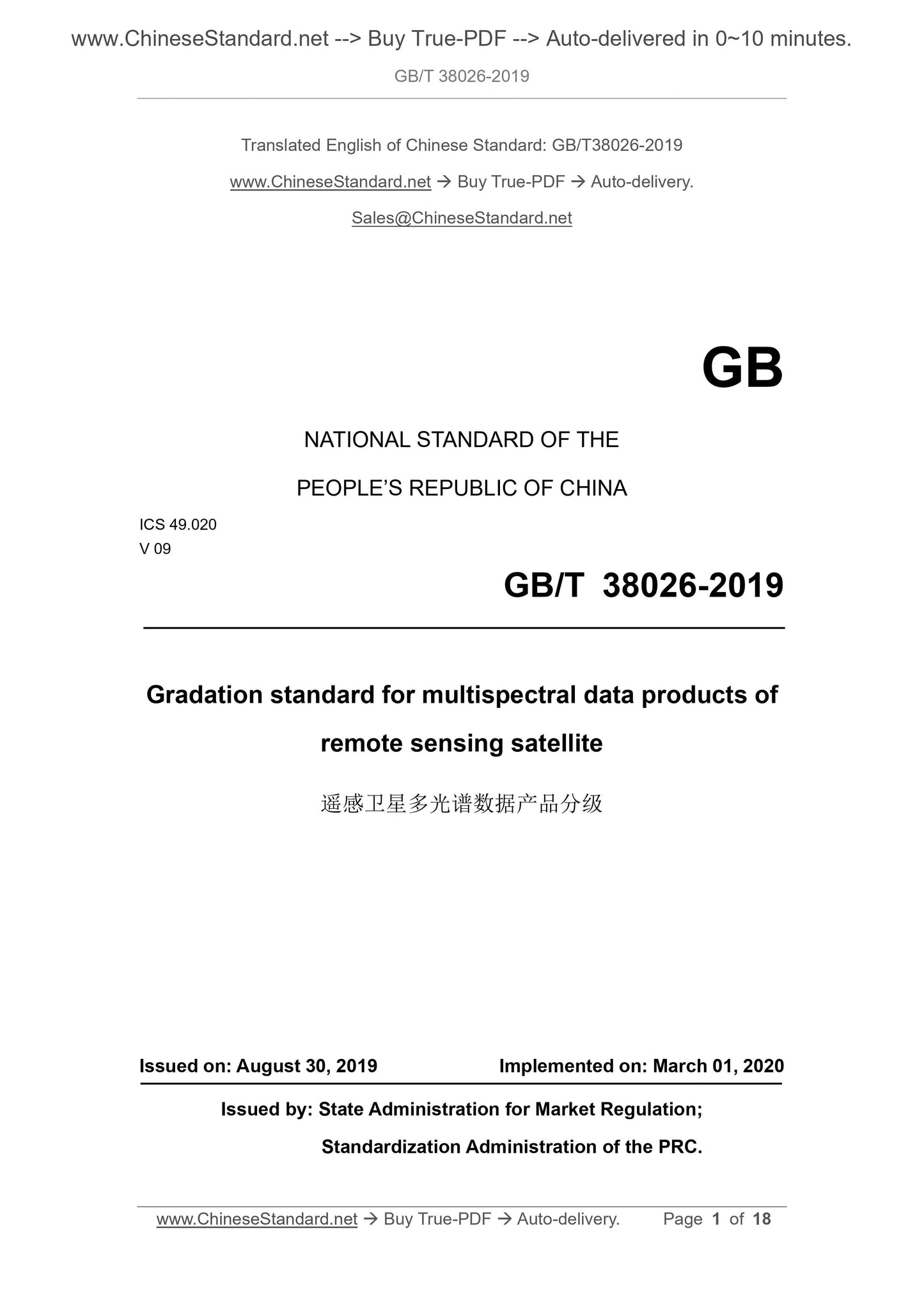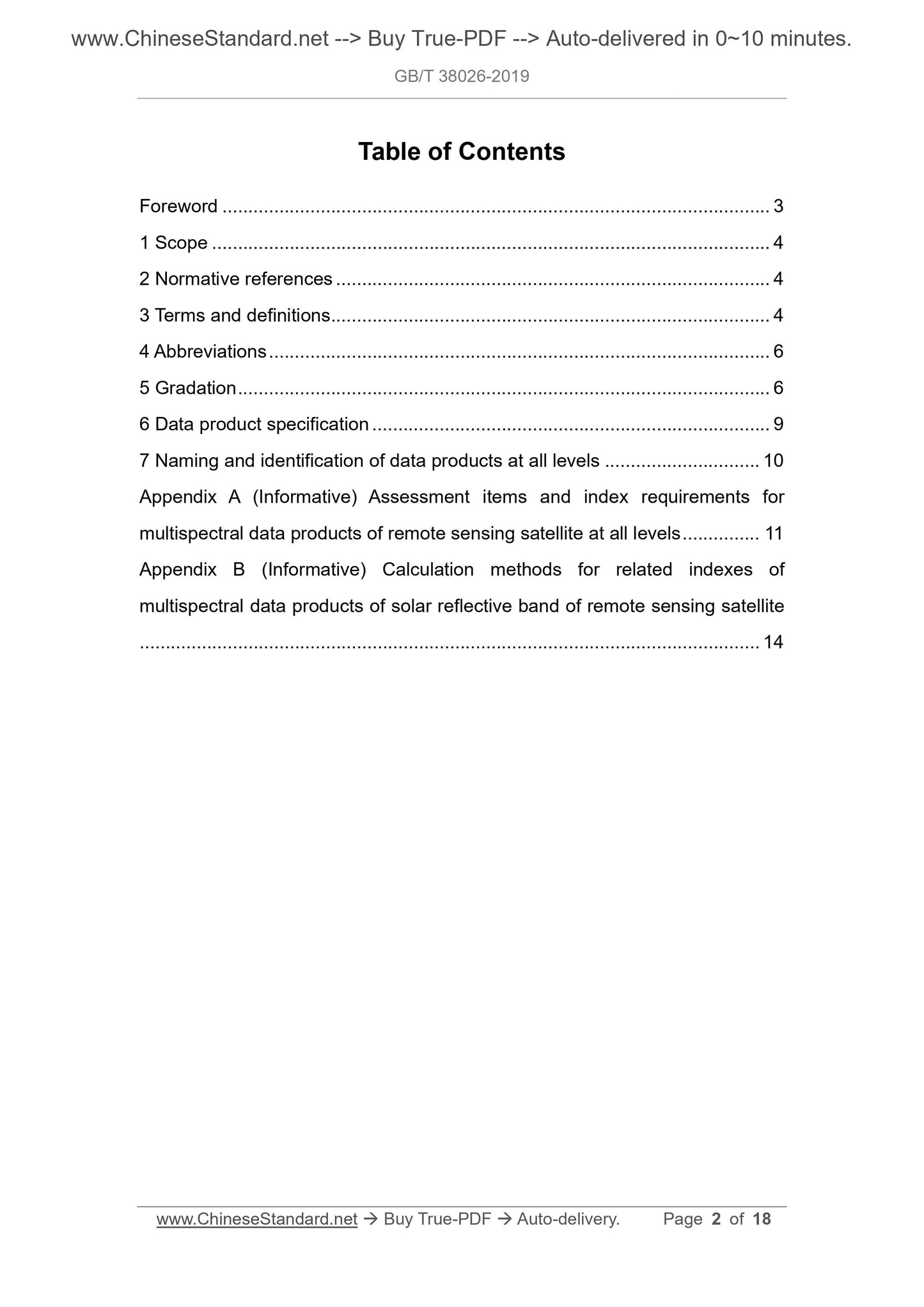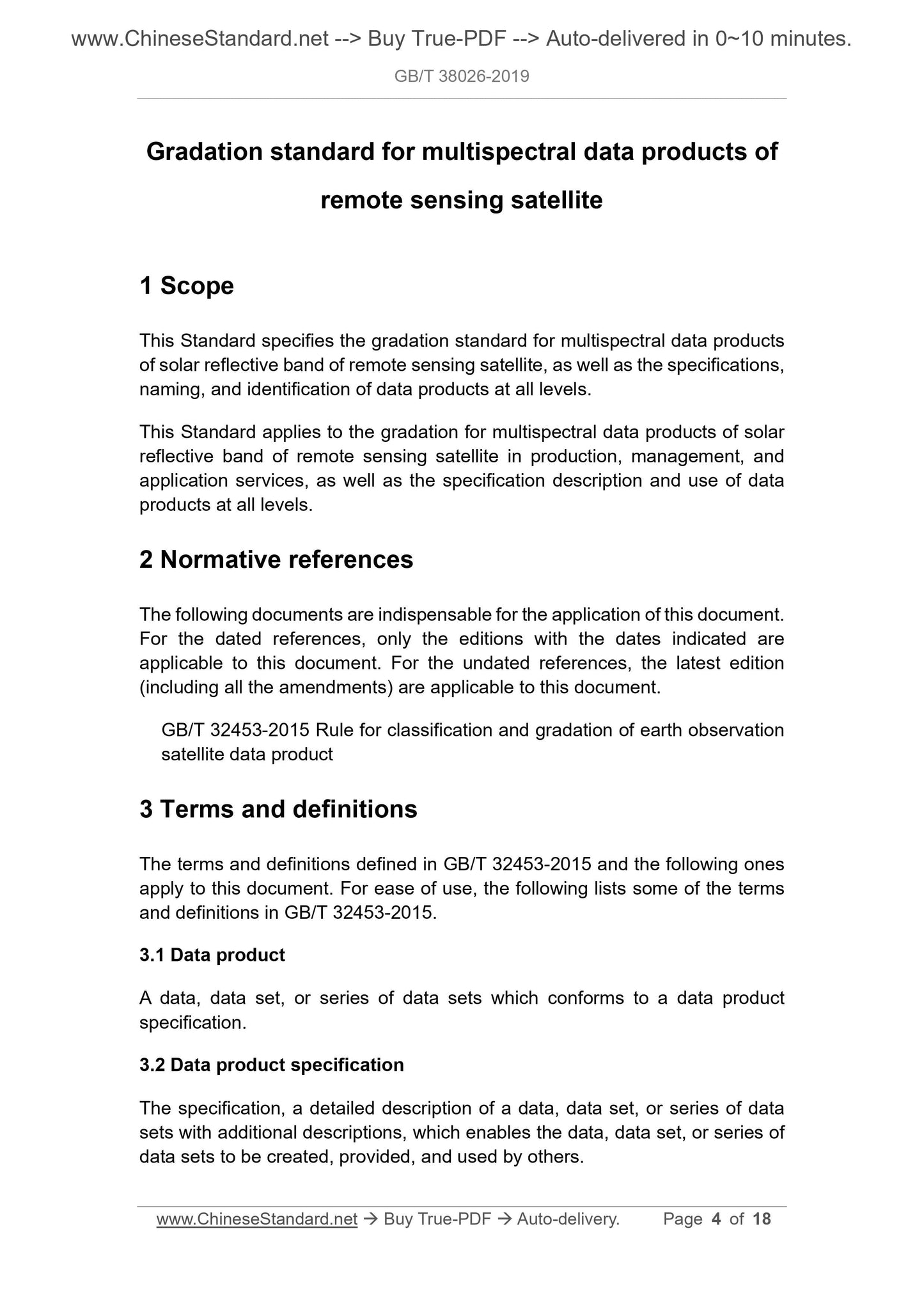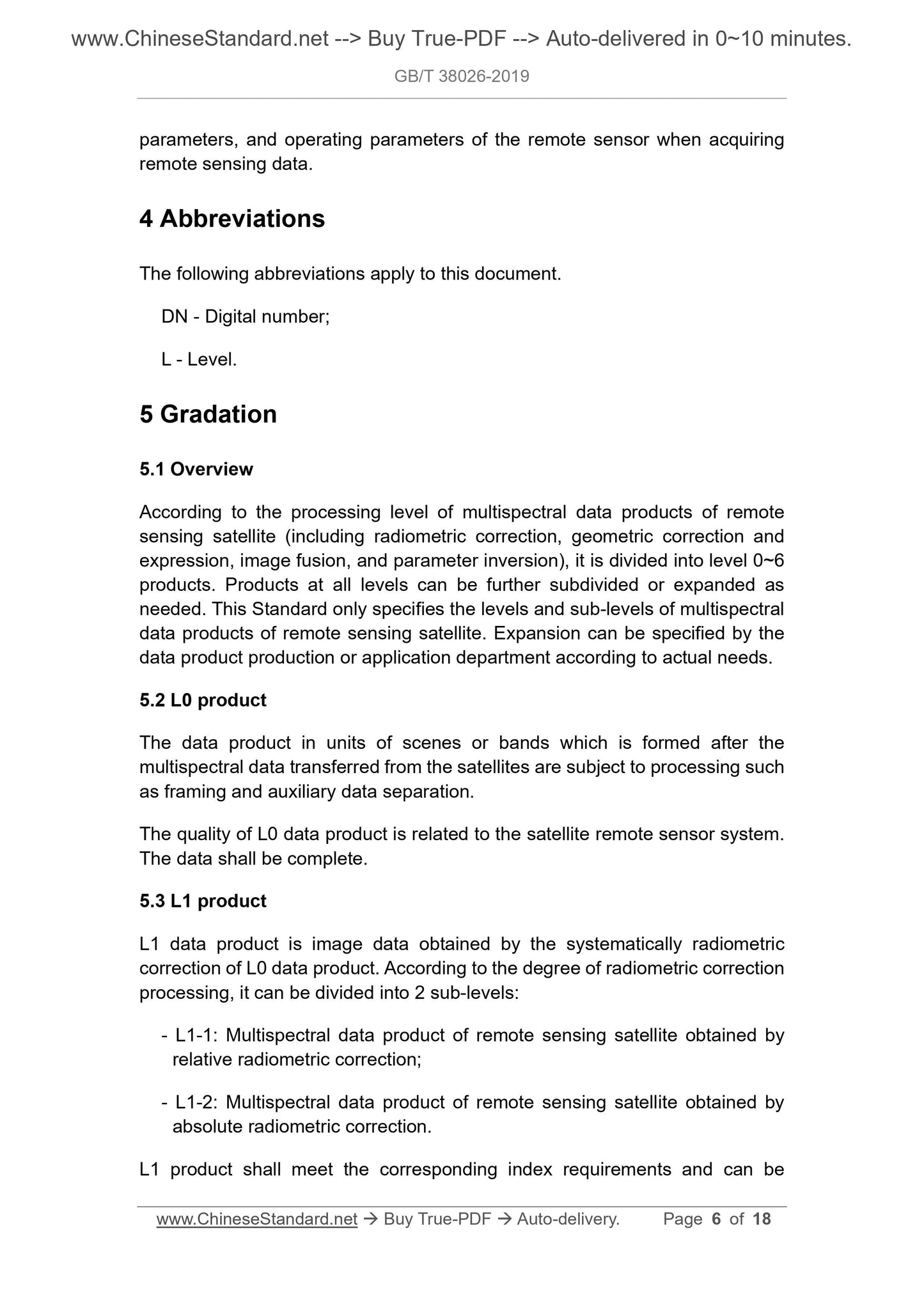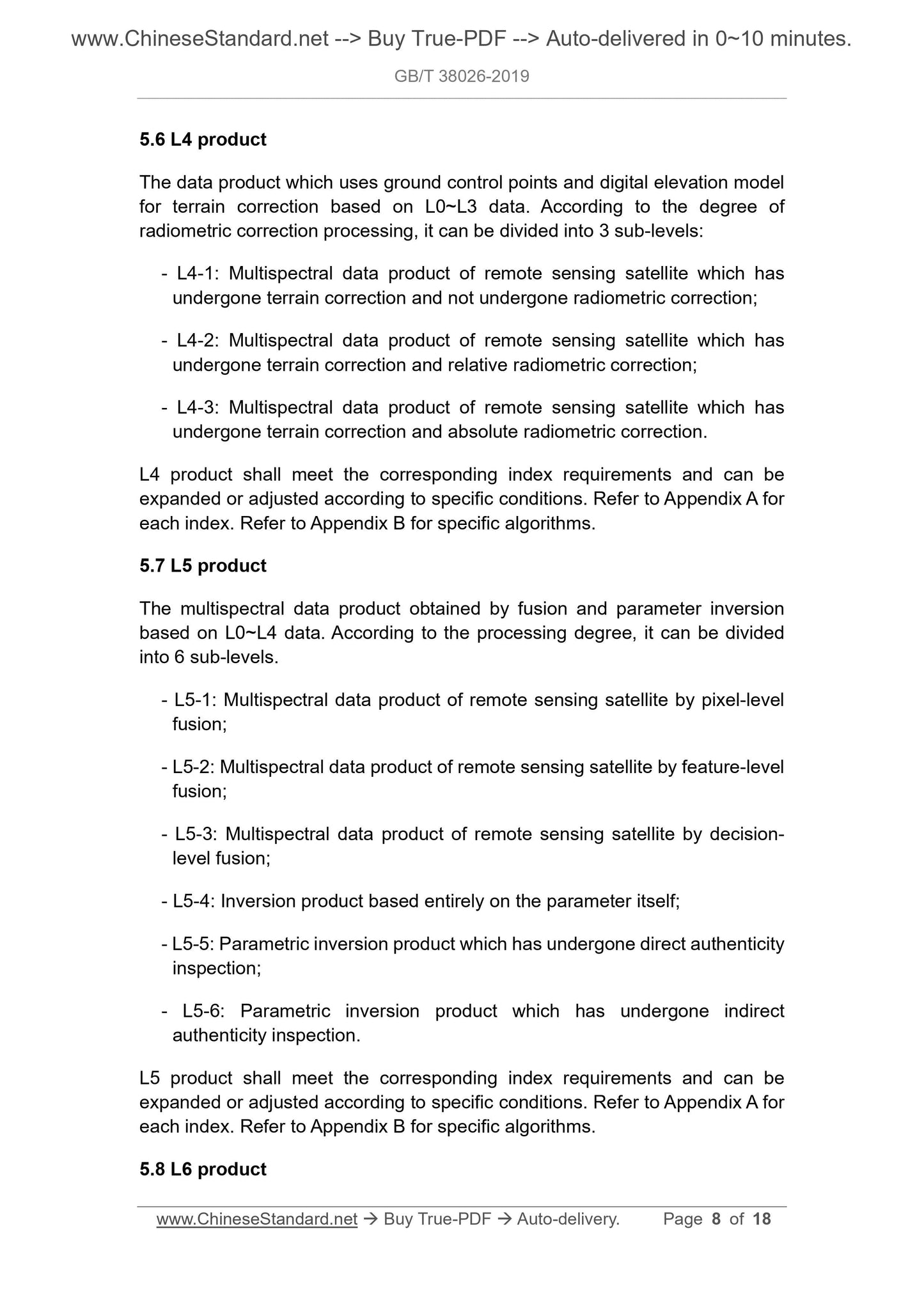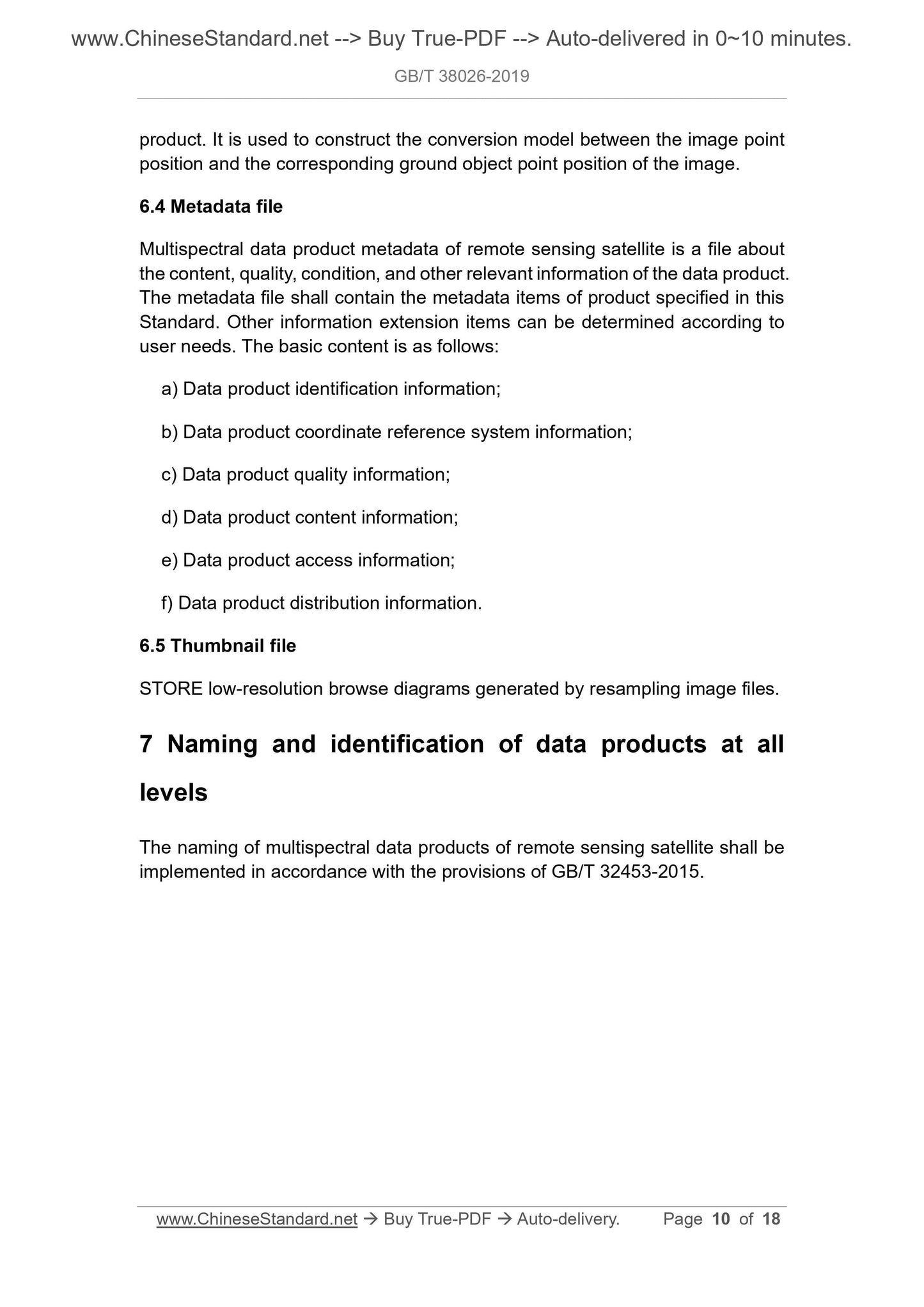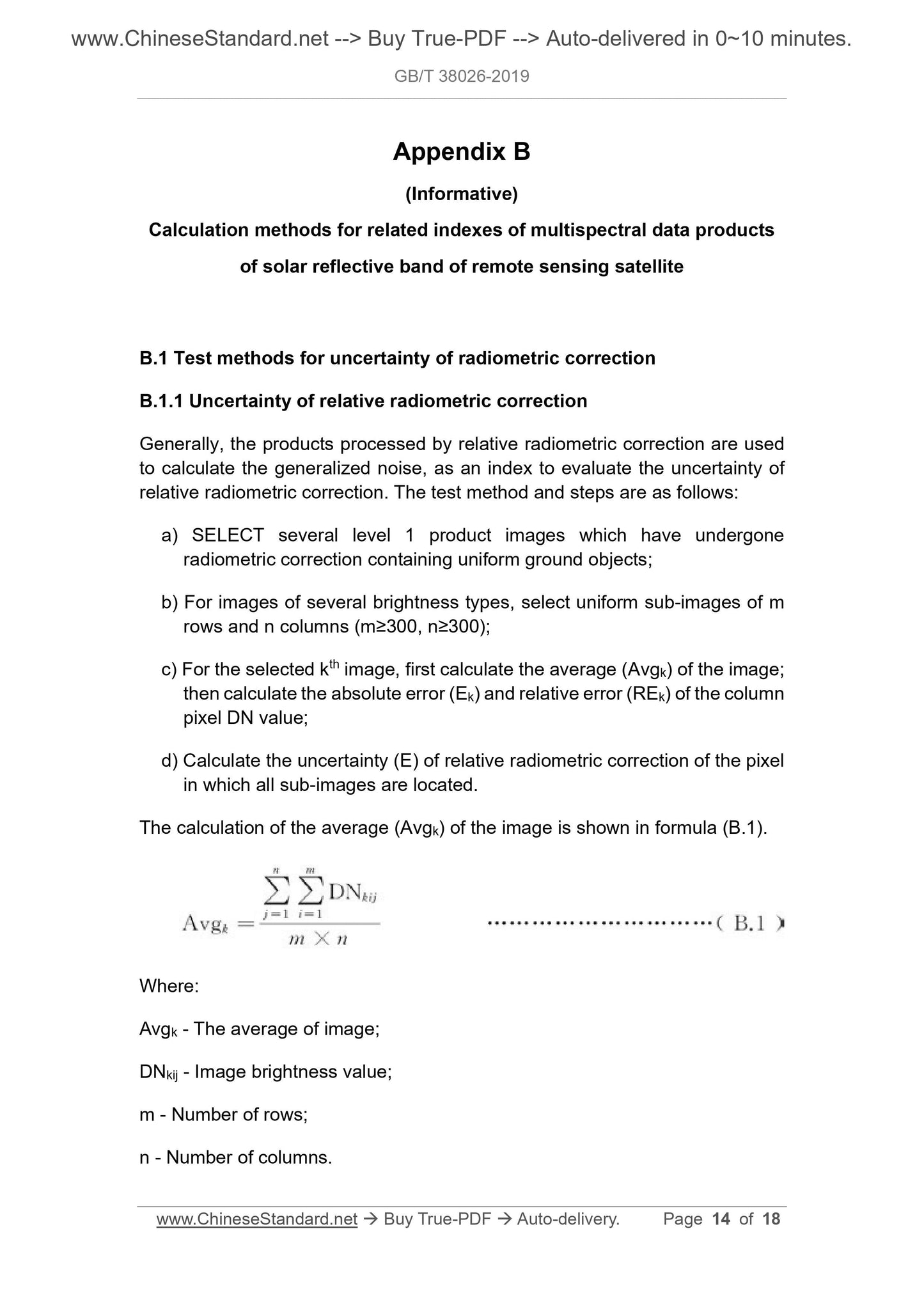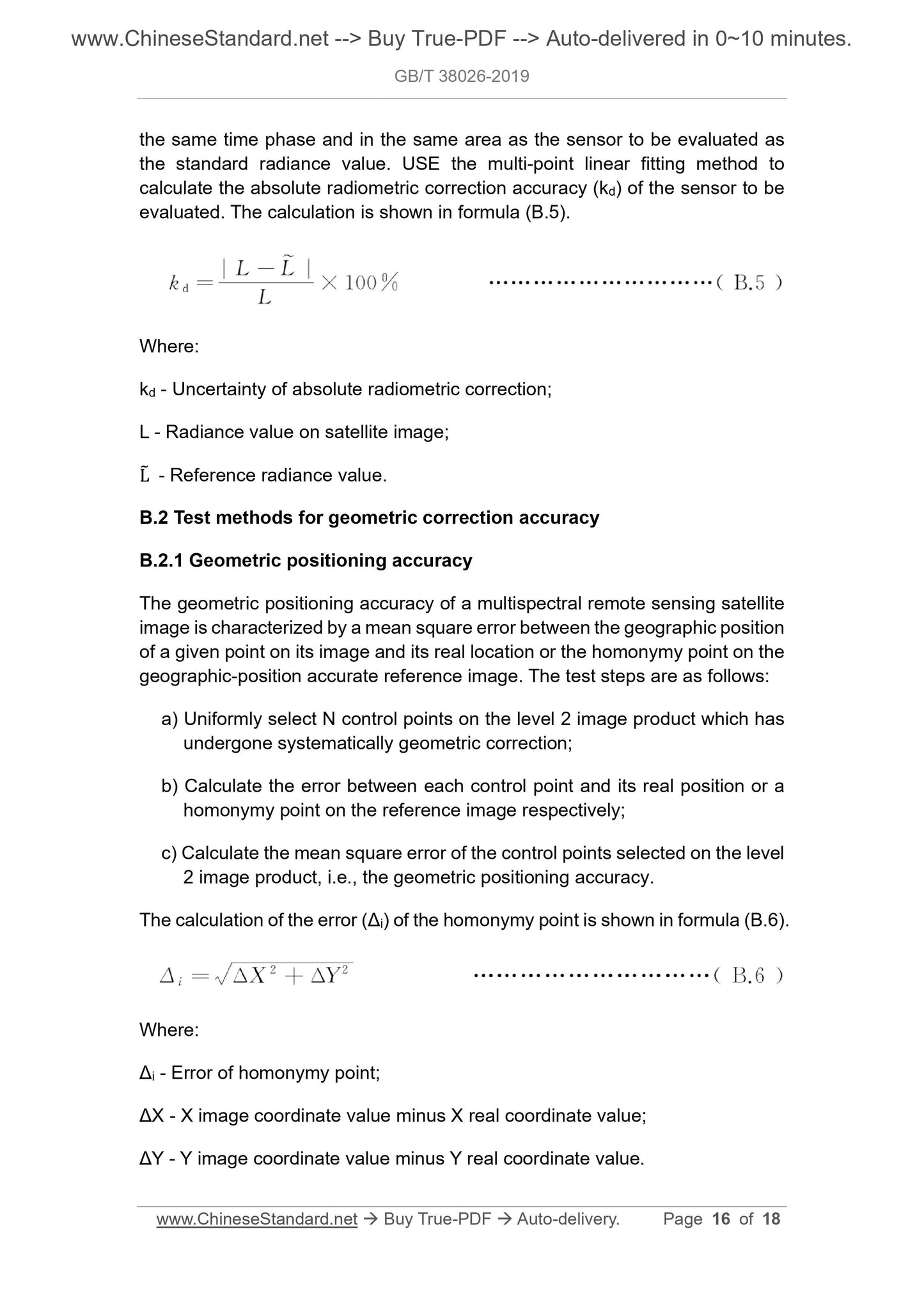1
/
of
8
www.ChineseStandard.us -- Field Test Asia Pte. Ltd.
GB/T 38026-2019 English PDF (GB/T38026-2019)
GB/T 38026-2019 English PDF (GB/T38026-2019)
Regular price
$190.00
Regular price
Sale price
$190.00
Unit price
/
per
Shipping calculated at checkout.
Couldn't load pickup availability
GB/T 38026-2019: Gradation standard for multispectral data products of remote sensing satellite
Delivery: 9 seconds. Download (and Email) true-PDF + Invoice.Get Quotation: Click GB/T 38026-2019 (Self-service in 1-minute)
Newer / historical versions: GB/T 38026-2019
Preview True-PDF
Scope
This Standard specifies the gradation standard for multispectral data productsof solar reflective band of remote sensing satellite, as well as the specifications,
naming, and identification of data products at all levels.
This Standard applies to the gradation for multispectral data products of solar
reflective band of remote sensing satellite in production, management, and
application services, as well as the specification description and use of data
products at all levels.
Basic Data
| Standard ID | GB/T 38026-2019 (GB/T38026-2019) |
| Description (Translated English) | Gradation standard for multispectral data products of remote sensing satellite |
| Sector / Industry | National Standard (Recommended) |
| Classification of Chinese Standard | V09 |
| Classification of International Standard | 49.020 |
| Word Count Estimation | 14,128 |
| Date of Issue | 2019-08-30 |
| Date of Implementation | 2020-03-01 |
| Issuing agency(ies) | State Administration for Market Regulation, China National Standardization Administration |
Share
